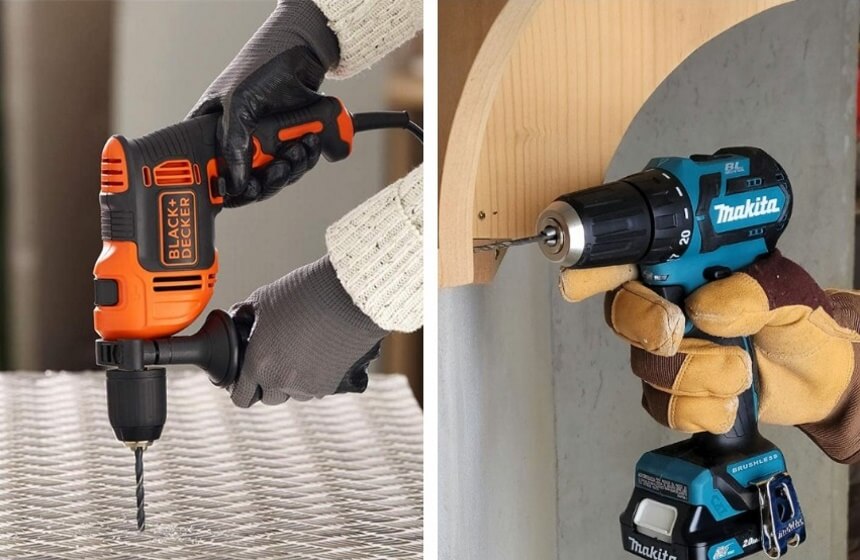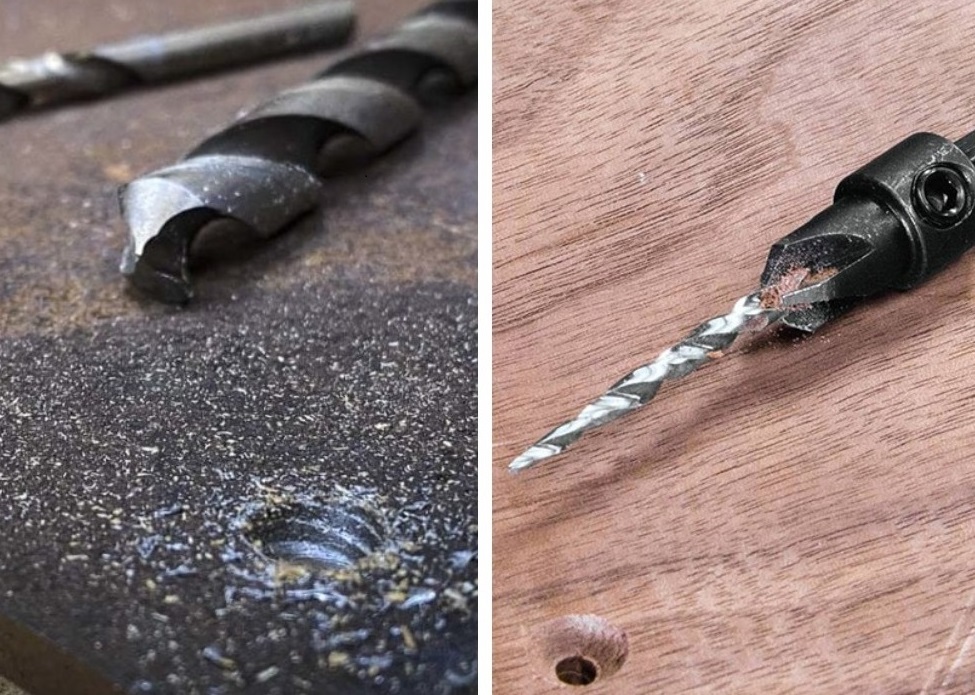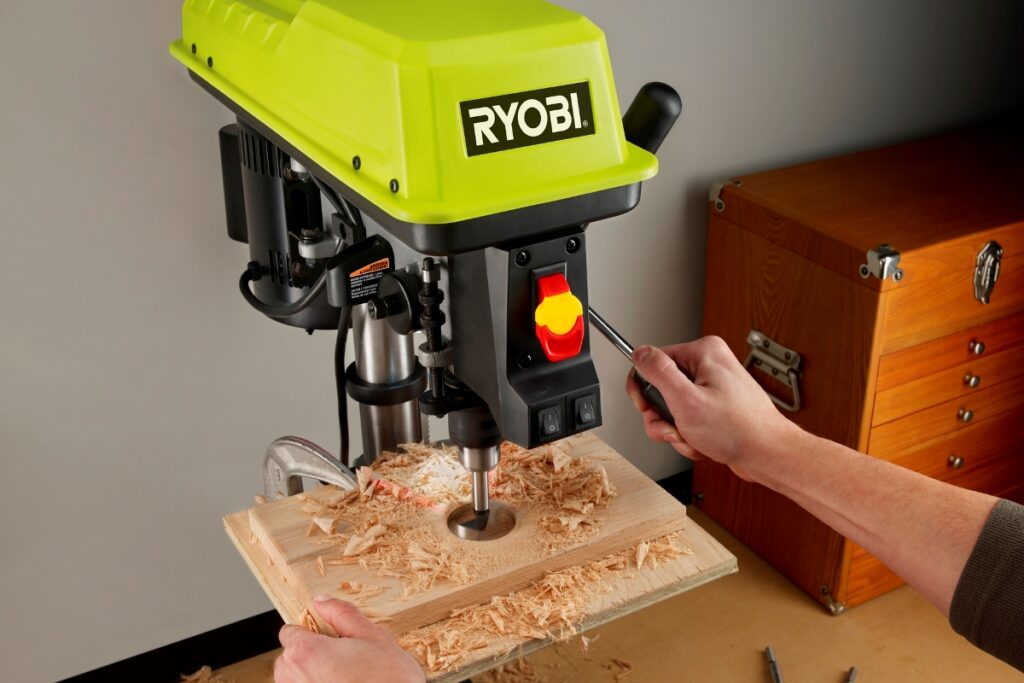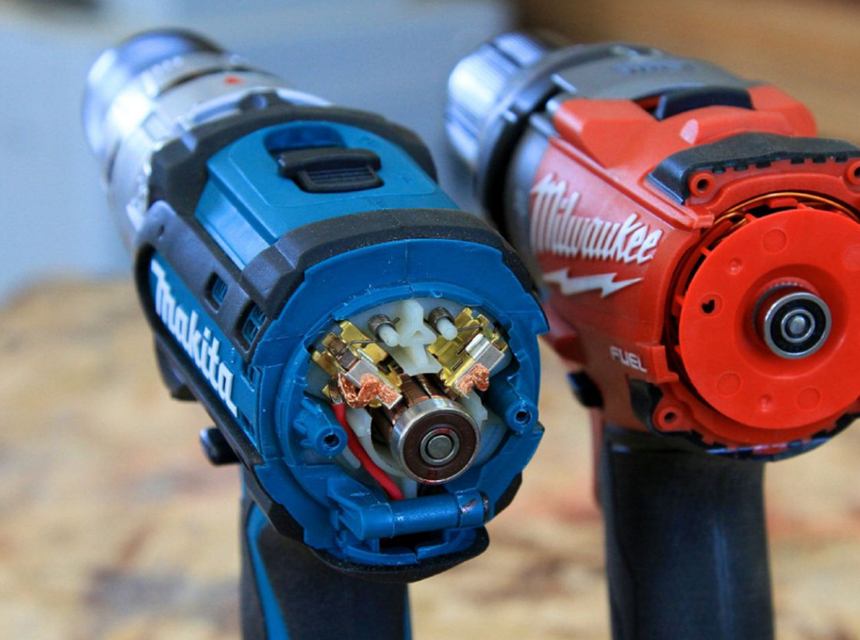There are thousands of different types of drill bits for wood, which can make getting into woodwork overwhelming. But even if they’re all made to drill into wood, they were all designed with a specific goal in mind.
But to start out, you really only need a few key pieces to round out your kit, and you can grow your wood drill bit collection from there on out. In this article, we’ll give you a compact yet thorough overview of some of the most common types of drill bits for wood.
As with any other project, you start with the aterial you need to get build the project you have in mind. In the case of wood, the question becomes, “Am I using softwood or hardwood?” Generally, softwood comes from trees that are evergreen, such as cedar and pine, and is typically less durable than hardwood. Generally, softwoods are also cheaper, because evergreens grow much faster than their counterparts. Hardwoods is sturdier, and is harvested from trees that lose their leaves come fall, such as Maple and Oak. Hardwoods may be a little bit more expansive, but will last you a lot longer, possibly giving you more worth for your money in the long run.
For every material and ever project, there’s the perfect bit to go along with it. Following, we have listed some of the most common types of drill bits for wood you’ll find yourself reaching for whenever you’re working with wood.
The brad point wood drilling bit is instantly recognizable by its sharp point at the center of the bit. This helps to stay centered as you drill through the wood. It also takes away the need to a pilot hole, and is easily one of the most accurate bits. Brad point bits are ideal for doweling, and generally used in the making of furniture and similar projects. They can be used on both hardwood and softwood.
Twist drill bits are somewhat of an exception of the bunch, as they are capable of dealing with steel, plastic, and wood, which is what makes them one of the most common types of bits. Sometimes known as a fluted bit, the twist bit gets its name thanks to its spiraled fluted along its body, which were designed to dispose of the drilled material. As twist drill bits are suitable for denser material, such as light metals, they can handle both softwoods and hardwoods.
Spade bits are best used when making holes with a larger diameter. They are flat, have no flutes, and lips on either side. Just like the brad point, the spur helps the bit from walking, giving an accurate result. The chiseling effect of the design of the spade bit helps minimize the wood from splintering, but beware to remove any excess material every once in a while. Keep in mind that drill speed can prevent unnecessary damage as well. The spade bit may look skinny, it can withstand both hardwoods and softwoods.
Another great bit for creating large holes it the Forstner drill bit, especially when a flat bottom is desired. The Forstner bit does not have a lot of reach, but is also known own for its precision, and useful for both hardwoods and softwoods. Benjamin Forstner applied for the patent for the Forstner bit in 1874, and because its design was already nearly perfect, barely any changes have been made to the design since.
Where the Forstner bit lacks, the auger bit comes to the rescue. Resembling a corkscrew on a plain shank, with a self-feeding tip on its tip, these are your answer when your project asks for deep, uniform holes in a large piece of wood. The design makes it so the auger bit gives you a clean finish, as the waste material is neatly pulled out. Auger bits can usually be used on both softwoods and hardwoods.
You’re forgiven if you’ve mistaken the self-feeding drill bit with a Forstner bit, as they do look a lot alike. The self-feeding wood drill bit has an unmistakable threaded in the center of the bit, much like you find on the auger bit, which is what pulls the put into the wood. They’re typically used for making larger holes that don’t require a neat finish, because the self-feeding bit is known to be rather aggressive in its approach.
When you use a self-centering drill bit, you have nothing to worry about when it comes to drilling exactly where you mean to. Most wood drill bits have ‘walking’ in mind as well, but the self-centering bit makes for even more consistent drilling. The self-centering bit is therefore perfect when working on a project that requires precision.
Hinge sinkers were designed to make circular hinges predominantly in manufacturing projects. It looks a lot like a hole saw, except that the hinge sinker bit is exclusively for furniture. You can use this bit on softwoods, for example when working on the kitchen. Hinge sink bits can be used on both hardwood and softwood.
Installer bits are also known as bell hangers, or fishing bit, and are used to install difficult wiring that requires the drilling of long, thin holes. They have a tiny hole at the tip through which to pull your wire before pulling back the drill, so the wire comes out with it.
When you countersink a screw it means the head of the screw comes flush with the surface. Especially with the making of furniture this bit comes in handy. There are separate bits to do this, but the countersink bit takes away the changing time and does two jobs in one go. Often their sharp point also does away with the need for a pilot hole, making the countersink bit even more effective. The countersink drill bit widens out so that your hole is instantly screw-ready.
The Speedbor Max is essentially a hybrid between a spade bit and a twist bit, turning it into this monster of a bit that is designed for maximum efficiency. It has three flutes for faster waste extraction, and a trio of cutting edges that increase its durability. All in all, it’s one of the fastest bits when working with wood.
Pocket hole bits can assist in the building of large surfaces that ask for you to join surfaces edge to edge. They work by creating a pocket hole along with a guide hole in which to place the screws.
Sometimes confused with the Forstner bit, but the hole saw can be used with a much higher torque, and has a much deeper reach. A rather impressive looking bit, the hole saw makes use of a pilot twist bit that stabilizes and guides the rotary saw on the outside. The hole saw works wonders with wood, but can also be used to drill holes in a range of other materials as well.
The adjustable drill bit is also known as the expansive bit, and both names refer to its ability to change in size, making it an extremely useful tool, as long as you have the required equipment that works with the bit. The adjustable drill bit uses a considerably high-torque, and is also in the possession of an extendable cutting arm.
Maybe they’re not exactly drills, but gimlets are nifty tools used to make holes in wood. It looks like a tapered screw threat at the tip, with a fluted section in the middle. With the help of the screw tip the gimlet is pulled into the wood, and the flutes force the wood apart. They’re particularly handy when making small holes.
When choosing a drill bit for wood there are several things to consider that will determine your choice. As with choosing a drill bit for any other material, you have to keep in mind the density of the material you’re planning to drill into, and what bit is made to withstand that.
What kind of hole you’re making, whether it’s a dowel in an old dresser you’re renovating, or a passage for new wiring, will further determine what kind of wood drill bit you need for your project. Always use the recommended precautions.
Wood drill bits come in all shapes and sizes, and have been made for any project you can think of. But all you need when you’re just starting out with woodworking are some of the more common ones. When choosing essentials, you can’t go wrong with an index of brad point bits, twist drill bits, spade bits, and Forstner bits. When deciding on which bit to choose, always consider the density of the material you’re working with, the result you’re trying to reach, and the finish needed. It’s understandable that, with so many types of drill bits for wood out there, it can be hard to see the forest for the trees. But now you should be well on your way to find your way out.





